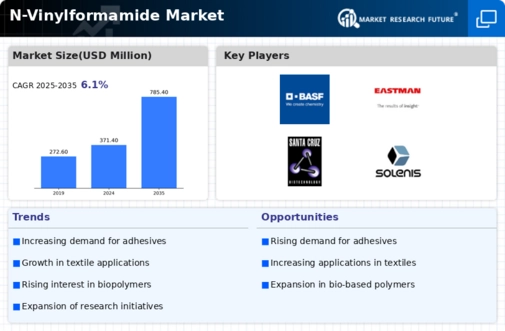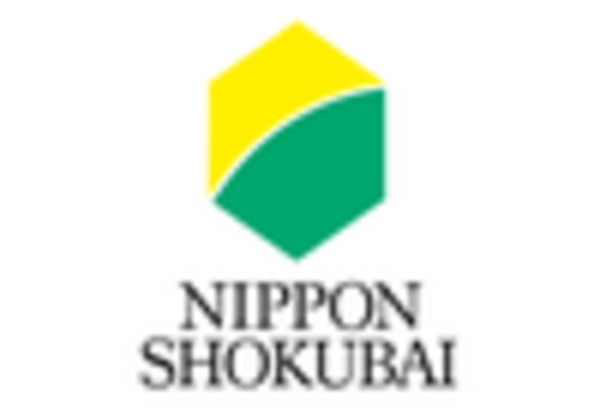Market Analysis
In-depth Analysis of N Vinylformamide Market Industry Landscape
The market dynamics of N-Vinylformamide (NVF) are influenced by various factors that impact its supply, demand, and pricing. NVF, a key chemical used in industries like adhesives, coatings, and textiles, experiences fluctuations driven by several elements. Firstly, the demand for NVF is often tied to the performance of end-user industries. For instance, when sectors like construction and automotive thrive, the demand for adhesives and coatings rises, subsequently boosting the need for NVF. Conversely, economic downturns can lead to reduced demand as companies cut back on production and expenditures. Additionally, technological advancements and innovations in manufacturing processes can affect market dynamics. New methods for synthesizing NVF more efficiently or sustainably can alter supply chains and pricing structures, impacting market equilibrium.
Moreover, regulatory policies and environmental concerns play a significant role in shaping the NVF market. Stringent regulations regarding chemical usage and emissions push companies to adopt cleaner production methods or seek alternative substances, which can affect NVF demand. Environmental consciousness among consumers also drives industries to adopt eco-friendly materials, potentially leading to shifts in product preferences and market dynamics. Furthermore, geopolitical factors such as trade agreements, tariffs, and diplomatic relations can influence the availability and pricing of NVF. Trade tensions between major economies, for instance, may disrupt supply chains and lead to market volatility.
The competitive landscape within the NVF market further contributes to its dynamics. The presence of multiple manufacturers and suppliers, each with varying production capacities and cost structures, fosters competition and price competition. Changes in market share, mergers, acquisitions, and strategic alliances among key players can impact supply dynamics and market equilibrium. Additionally, fluctuations in raw material prices, particularly those of precursor chemicals used in NVF production, directly affect the cost of manufacturing and, consequently, the pricing of NVF in the market.
Market dynamics are also influenced by macroeconomic factors such as inflation, exchange rates, and interest rates. Fluctuations in currency values can affect the cost of imported raw materials or impact export competitiveness, thereby influencing NVF prices and market dynamics. Interest rate changes by central banks can affect borrowing costs for businesses, influencing investment decisions and overall economic activity, which in turn impacts NVF demand.
Furthermore, consumer trends and preferences play a role in shaping the NVF market dynamics. Shifts towards sustainable products, organic materials, or products with specific performance attributes can influence demand patterns and market segmentation within the NVF industry. Market players must stay attuned to changing consumer preferences and adapt their strategies accordingly to remain competitive in the evolving marketplace.

















Leave a Comment